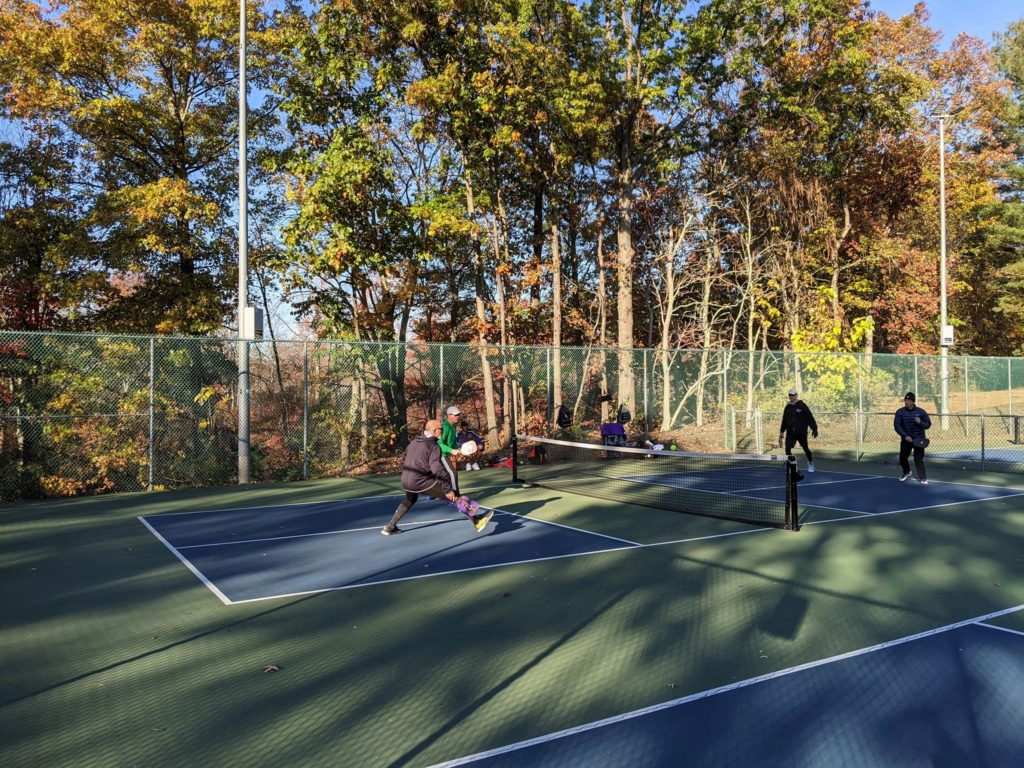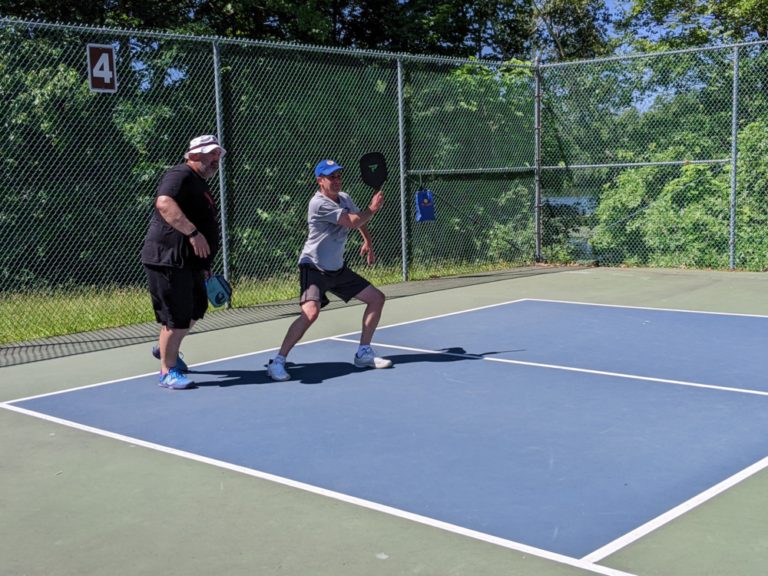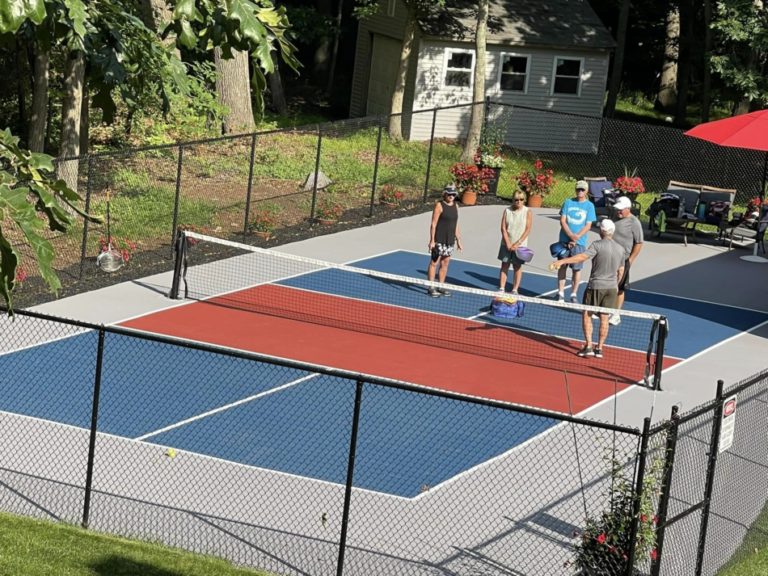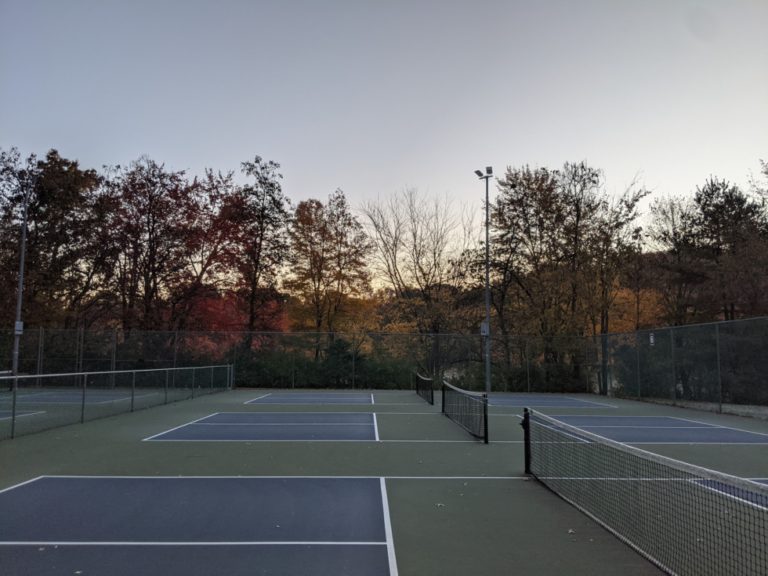One of the most important aspects of pickleball is the grip that you use on your paddle. In this article, we will discuss the different grip positions in pickleball and how they can improve your game.
1. Eastern Grip
The Eastern grip is the most common grip used in pickleball. This grip is similar to the grip used in tennis and is great for beginners. To use this grip, place your hand on the handle of the paddle so that the base knuckle of your index finger is on the top of the handle. Your other fingers should be wrapped around the handle, and your thumb should be on the backside of the handle. The Eastern grip provides good control and power, making it a good all-around grip for most players.
2. Continental Grip
The Continental grip is similar to the Eastern grip but with a slight variation. This grip is often used for serves and overhead shots. To use this grip, place your hand on the handle so that your base knuckle of your index finger is on the right edge of the paddle. Your other fingers should be wrapped around the handle, and your thumb should be on the backside of the handle. The Continental grip provides a great deal of wrist action, making it ideal for generating topspin and slice.
3. Western Grip
The Western grip is less commonly used in pickleball, but it can be effective for certain players. This grip is often used in tennis and allows for a greater degree of topspin. To use this grip, place your hand on the handle so that the base knuckle of your index finger is on the left edge of the paddle. Your other fingers should be wrapped around the handle, and your thumb should be on the backside of the handle. The Western grip is great for players who want to generate a lot of topspin on their shots.
4. Semi-Western Grip
The Semi-Western grip is a variation of the Western grip that is used by some pickleball players. This grip provides a good balance of power and control. To use this grip, place your hand on the handle so that the base knuckle of your index finger is on the top of the handle, but slightly to the left. Your other fingers should be wrapped around the handle, and your thumb should be on the backside of the handle. The Semi-Western grip is great for players who want to generate a moderate amount of topspin on their shots.
5. Eastern Backhand Grip
The Eastern Backhand grip is used for backhand shots in pickleball. This grip is similar to the Eastern grip used for forehand shots, but with a slight variation. To use this grip, place your hand on the handle so that the base knuckle of your index finger is on the right edge of the paddle. Your other fingers should be wrapped around the handle, and your thumb should be on the backside of the handle. The Eastern Backhand grip provides good control and power on backhand shots.
6. Continental Backhand Grip
The Continental Backhand grip is similar to the Continental grip used for serves and overhead shots but is used for backhand shots. To use this grip, place your hand on the handle so that the base knuckle of your index finger is on the top of the handle, but slightly to the right. Your other fingers should be wrapped around the handle, and your thumb should be on the backside of the handle. The Continental Backhand grip provides a great deal of wrist action, making it ideal for generating topspin and slice on backhand shots.
7. Fingers-Up Grip
The Fingers-Up grip is a unique grip used by some pickleball players. This grip involves holding the paddle with your fingers pointing upwards rather than wrapping around the handle. To use this grip, place your hand on the handle with your fingers pointing towards the sky. Your thumb should be on the backside of the handle. The Fingers-Up grip can provide a lot of power and control but requires a lot of wrist strength.
8. Knuckles-Down Grip
The Knuckles-Down grip is another unique grip used by some pickleball players. This grip involves holding the paddle with your knuckles pointing downwards rather than wrapping around the handle. To use this grip, place your hand on the handle with your knuckles pointing towards the ground. Your thumb should be on the backside of the handle. The Knuckles-Down grip can provide a lot of power and control but can be difficult to master.
Grip Position | Description | Benefits | Techniques |
Eastern | The most common grip in pickleball, with the handle held in the palm and the index knuckle on the edge of the paddle face. | Easy to learn, great for beginners, good for basic shots. | Use for forehand and backhand shots, groundstrokes, volleys, and serves. |
Continental | A grip where the handle is held like a hammer, with the paddle face turned slightly towards the ground. | Ideal for generating topspin and slice, good for one-handed backhands. | Use for serves, backhand shots, volleys, and overheads. |
Western | Grip where the handle is held near the base of the fingers, with the paddle face turned more towards the ground than the Continental grip. | Great for generating a lot of topspin. | Use for forehand shots, groundstrokes, and serves. |
Semi-Western | A grip where the handle is held between the Eastern and Western grip positions. | Provides moderate topspin, good for players with moderate wrist strength. | Use for forehand shots and groundstrokes. |
Eastern Backhand | A variation of the Eastern grip used specifically for backhand shots. | Easy to learn, good for backhand shots. | Use for backhand shots and volleys. |
Continental Backhand | A variation of the Continental grip used specifically for backhand shots. | Ideal for generating topspin and slice on backhand shots. | Use for backhand shots and volleys. |
Fingers-Up | A unique grip where the paddle is held with fingers pointing upwards rather than wrapping around the handle. | Provides a lot of power and control but requires a lot of wrist strength. | Use for forehand shots, groundstrokes, and serves. |
Knuckles-Down | A unique grip where the paddle is held with knuckles pointing downwards rather than wrapping around the handle. | Provides a lot of power and control but can be difficult to master. | Use for forehand shots, groundstrokes, and serves. |
Conclusion
In conclusion, there are many different grip positions in pickleball, and each one has its own unique benefits. The Eastern grip is the most common and is great for beginners, while the Continental grip is ideal for generating topspin and slice. The Western grip is great for players who want to generate a lot of topspin, while the Semi-Western grip is great for players who want to generate a moderate amount of topspin.
The Eastern Backhand grip is great for backhand shots, while the Continental Backhand grip is ideal for generating topspin and slice on backhand shots. The Fingers-Up and Knuckles-Down grips are unique grips that can provide a lot of power and control but require a lot of wrist strength and can be difficult to master.
When choosing a grip, it’s important to consider your playing style and what kind of shots you want to make. Experiment with different grips to find the one that works best for you. By mastering different grip positions in pickleball, you can improve your game and take it to the next level.






